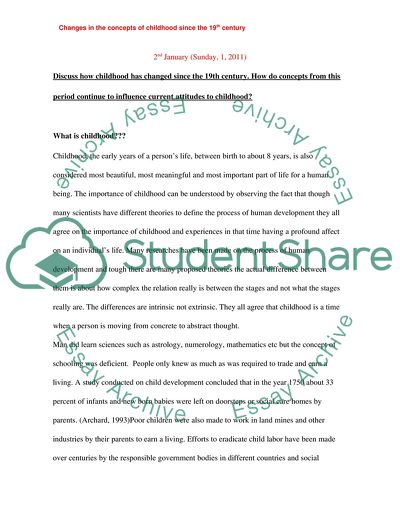Cite this document
(Changes in the Concepts of Childhood Since the 19th Century Research Paper, n.d.)
Changes in the Concepts of Childhood Since the 19th Century Research Paper. Retrieved from https://studentshare.org/social-science/1747631-discuss-how-childhood-has-changed-since-the-19th-century-how-do-concepts-from-this-period-continue-to-influence-current-attitudes-to-childhood
Changes in the Concepts of Childhood Since the 19th Century Research Paper. Retrieved from https://studentshare.org/social-science/1747631-discuss-how-childhood-has-changed-since-the-19th-century-how-do-concepts-from-this-period-continue-to-influence-current-attitudes-to-childhood
(Changes in the Concepts of Childhood Since the 19th Century Research Paper)
Changes in the Concepts of Childhood Since the 19th Century Research Paper. https://studentshare.org/social-science/1747631-discuss-how-childhood-has-changed-since-the-19th-century-how-do-concepts-from-this-period-continue-to-influence-current-attitudes-to-childhood.
Changes in the Concepts of Childhood Since the 19th Century Research Paper. https://studentshare.org/social-science/1747631-discuss-how-childhood-has-changed-since-the-19th-century-how-do-concepts-from-this-period-continue-to-influence-current-attitudes-to-childhood.
“Changes in the Concepts of Childhood Since the 19th Century Research Paper”, n.d. https://studentshare.org/social-science/1747631-discuss-how-childhood-has-changed-since-the-19th-century-how-do-concepts-from-this-period-continue-to-influence-current-attitudes-to-childhood.


